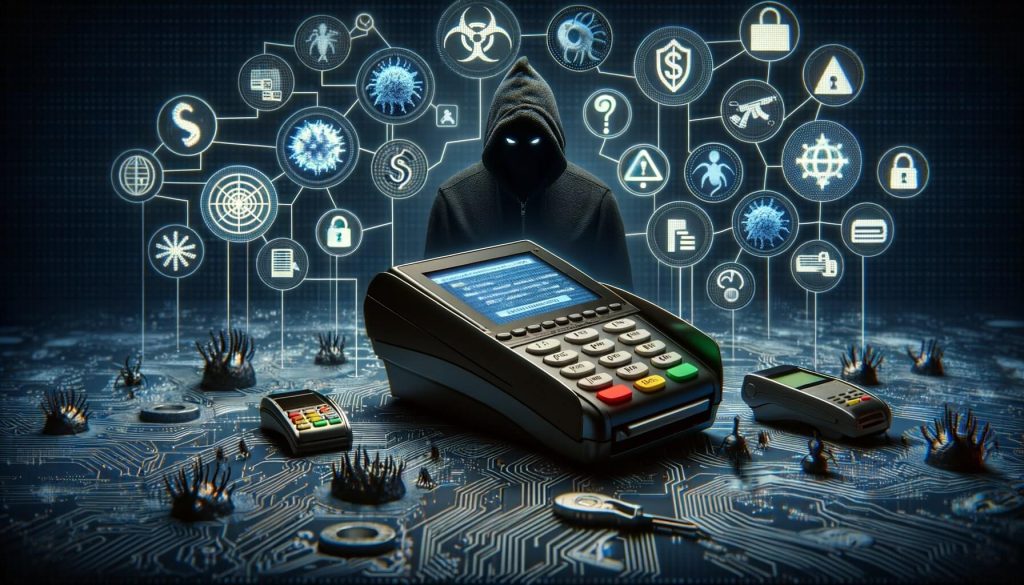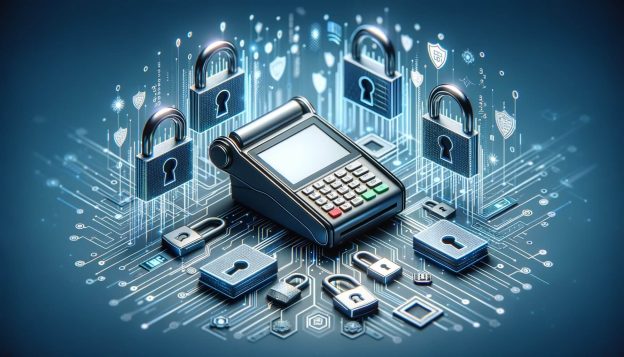In today’s digital age, where technology is rapidly advancing, businesses are increasingly relying on point-of-sale (POS) systems to streamline their operations and enhance customer experiences. A POS system is a combination of hardware and software that allows businesses to process transactions, manage inventory, and generate reports. However, with the convenience and efficiency that POS systems offer, there also comes the risk of security breaches and data theft. This is where POS security becomes crucial.
POS security refers to the measures and protocols put in place to protect sensitive customer information, such as credit card data, from unauthorized access and misuse. It involves implementing various security controls, including authentication, encryption, monitoring, and compliance with regulatory requirements.
In this comprehensive guide, we will delve into the world of POS security, exploring its importance, common threats and vulnerabilities, best practices for securing POS systems, and more.
Understanding the Importance of POS Security
The importance of POS security cannot be overstated, as a security breach can have severe consequences for both businesses and their customers. When customer data is compromised, it can lead to financial loss, damage to reputation, and legal liabilities.
According to a study by IBM, the average cost of a data breach in 2020 was a staggering $3.86 million. This highlights the need for businesses to prioritize POS security to safeguard their operations and protect their customers’ sensitive information.
Common Threats and Vulnerabilities in POS Systems

POS systems are attractive targets for cybercriminals due to the valuable data they store. Understanding the common threats and vulnerabilities in POS systems is essential for implementing effective security measures. Some of the most prevalent threats include:
1. Malware Attacks: Malicious software, such as keyloggers and RAM scrapers, can be installed on POS systems to capture sensitive data during transactions.
2. Insider Threats: Employees with access to POS systems can misuse their privileges to steal customer data or engage in fraudulent activities.
3. Weak Authentication: Weak or default passwords, lack of two-factor authentication, and improper user access controls can make it easier for attackers to gain unauthorized access to POS systems.
4. Network Vulnerabilities: Insecure Wi-Fi networks, unpatched software, and weak network segmentation can expose POS systems to external attacks.
5. Physical Security Breaches: Theft or unauthorized access to physical devices, such as card readers or cash registers, can compromise the security of POS systems.
Best Practices for Securing POS Systems

Implementing strong security measures is essential to protect your POS system from threats and vulnerabilities. Here are some best practices to consider:
1. Implementing Strong Password Policies for POS Systems
One of the simplest yet most effective ways to enhance POS security is by implementing strong password policies. This includes requiring employees to use complex passwords that are regularly changed. Passwords should be a combination of uppercase and lowercase letters, numbers, and special characters. Additionally, multi-factor authentication can provide an extra layer of security by requiring users to provide additional verification, such as a fingerprint or a one-time code.
2. Encrypting Data and Securing Payment Transactions
Encrypting data is crucial to protect sensitive customer information during transmission and storage. Encryption converts data into an unreadable format, making it useless to unauthorized individuals. Implementing end-to-end encryption ensures that data remains secure throughout the entire transaction process, from the moment it is entered into the POS system to when it reaches the payment processor.
3. Regularly Updating and Patching POS Software
Regularly updating and patching POS software is vital to address any known vulnerabilities and protect against emerging threats. Software updates often include security patches that fix vulnerabilities identified by the software provider. It is essential to stay up to date with the latest software versions and promptly install any updates or patches released by the vendor.
4. Training Employees on POS Security Awareness
Employees play a crucial role in maintaining POS security. It is essential to provide comprehensive training on POS security best practices, including how to identify and report suspicious activity, how to create strong passwords, and how to handle customer data securely. Regular training sessions and reminders can help reinforce security protocols and ensure that employees remain vigilant.
5. Monitoring and Detecting Suspicious Activity in POS Systems
Implementing robust monitoring and detection systems can help identify and respond to suspicious activity in real-time. This includes monitoring network traffic, system logs, and user activity for any signs of unauthorized access or unusual behavior. Intrusion detection systems and security information and event management (SIEM) tools can provide valuable insights into potential security breaches.
Implementing Strong Authentication and Access Controls

Authentication is a critical component of POS security, as it verifies the identity of users accessing the system. Implementing strong authentication measures can significantly reduce the risk of unauthorized access. Here are some recommended practices:
1. Two-Factor Authentication (2FA): Require users to provide two forms of identification, such as a password and a unique code sent to their mobile device, to access the POS system.
2. Role-Based Access Control (RBAC): Assign specific roles and permissions to users based on their job responsibilities. This ensures that employees only have access to the functions and data necessary for their work.
3. User Account Management: Regularly review and update user accounts to remove inactive or unnecessary accounts. Implement a process for granting and revoking access privileges.
4. Multi-Level Authentication: For sensitive operations, such as voiding transactions or accessing customer data, require additional layers of authentication to prevent unauthorized access.
Encryption and Data Protection in POS Systems

Encryption plays a crucial role in protecting sensitive data in transit and at rest. By encrypting data, even if it is intercepted or stolen, it remains unreadable and unusable to unauthorized individuals. Here are some encryption and data protection practices for POS systems:
1. End-to-End Encryption (E2EE): Implement E2EE to encrypt data from the point of capture, such as a card reader, all the way to the payment processor. This ensures that data remains encrypted throughout the entire transaction process.
2. Tokenization: Replace sensitive data, such as credit card numbers, with unique tokens that have no intrinsic value. This reduces the risk of data theft, as tokens cannot be used to make fraudulent transactions.
3. Secure Data Storage: Store encrypted data in secure databases or cloud environments. Implement access controls and encryption keys to protect data at rest.
4. Secure Transmission Protocols: Use secure transmission protocols, such as HTTPS, to encrypt data sent between the POS system and external servers or payment gateways.
Monitoring and Detection of Suspicious Activities
Monitoring and detecting suspicious activities in real-time is crucial for identifying and responding to potential security breaches. Here are some monitoring and detection practices for POS systems:
1. Intrusion Detection Systems (IDS): Deploy IDS to monitor network traffic and detect any suspicious or malicious activities. IDS can identify patterns indicative of an attack and trigger alerts for further investigation.
2. Log Monitoring: Regularly review system logs to identify any unusual or unauthorized activities. Log monitoring can help detect signs of a breach or insider threat.
3. Anomaly Detection: Implement anomaly detection mechanisms to identify deviations from normal system behavior. This can include unusual transaction patterns, unexpected data transfers, or abnormal user activities.
4. Incident Response Plan: Develop an incident response plan that outlines the steps to be taken in the event of a security incident. This includes procedures for containment, investigation, and recovery.
Compliance and Regulatory Requirements for POS Security
In addition to implementing security best practices, businesses must also comply with various regulatory requirements related to POS security. Failure to comply with these regulations can result in severe penalties and reputational damage. Some of the key regulations include:
1. Payment Card Industry Data Security Standard (PCI DSS): PCI DSS is a set of security standards that businesses accepting payment cards must adhere to. It includes requirements for secure network architecture, encryption, access controls, and regular security testing.
2. General Data Protection Regulation (GDPR): GDPR applies to businesses that process personal data of individuals in the European Union. It mandates the protection of personal data and imposes strict requirements for data breach notification and consent.
3. Health Insurance Portability and Accountability Act (HIPAA): HIPAA applies to healthcare providers and requires the protection of patient health information. It includes requirements for access controls, encryption, and audit trails.
4. State and Industry-Specific Regulations: Depending on the industry and location, businesses may be subject to additional regulations, such as the California Consumer Privacy Act (CCPA) or the New York State Department of Financial Services (NYDFS) Cybersecurity Regulation.
Frequently Asked Questions (FAQs) about POS Security
Q1. What is the role of encryption in POS security?
Encryption plays a crucial role in protecting sensitive data in transit and at rest. It ensures that even if data is intercepted or stolen, it remains unreadable and unusable to unauthorized individuals.
Q2. How can businesses protect against insider threats?
To protect against insider threats, businesses should implement strong authentication measures, such as two-factor authentication, and regularly review and update user accounts to remove inactive or unnecessary accounts.
Q3. What are some best practices for securing POS systems?
Some best practices for securing POS systems include regular software updates, strong password policies, employee training, network segmentation, and regular security audits.
Q4. What are the regulatory requirements for POS security?
Some key regulatory requirements for POS security include the Payment Card Industry Data Security Standard (PCI DSS), General Data Protection Regulation (GDPR), Health Insurance Portability and Accountability Act (HIPAA), and state and industry-specific regulations.
Conclusion
In conclusion, POS security is of utmost importance in today’s digital landscape. Businesses must understand the common threats and vulnerabilities in POS systems and implement best practices to secure their infrastructure.
By implementing strong authentication and access controls, encryption and data protection measures, and monitoring and detection mechanisms, businesses can significantly reduce the risk of security breaches and protect their customers’ sensitive information.
Compliance with regulatory requirements is also essential to avoid penalties and reputational damage. By prioritizing POS security, businesses can ensure the integrity of their operations and build trust with their customers.

